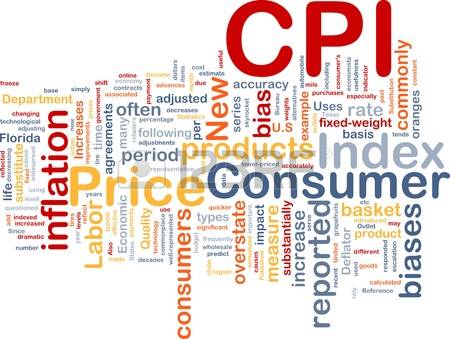The main purpose of a Trash Expense Audit (Trash Audit) is to identify billing errors and reduce disposal costs for the client. Obtaining a copy of the current hauling agreement is vital aspect to an audit, how else can one identify a billing error? In the fine print of most commercial trash hauling contracts you will find a section for “Rate Adjustments” and in this section it is very common to find a reference to the Consumer Price Index (CPI). It would be worded something like this, “Company reserves the right to increase the charges/rates payable by customer during the term, for things such as: a) increases in the Consumer Price Index, plus 4 percent, of the then current charges.” This rate adjustment is typically adjusted annually per the contract start date.
What is the Consumer Price Index?
Per www.bls.gov, the Consumer Price Index (CPI) is a measure of the average change over time in the prices paid by consumers for a market basket of consumer goods and services. The CPI has many different intricacy as the CPI is not just one product, one category, or one season. It important to understand exactly what CPI category your commercial trash hauler is using to adjust your rates. Most people don’t understand the various depths and nuances associated with CPI tracking and it takes an experienced auditor to unravel the details and common mistakes. For this article we will try and keep things simple but keep in mind there are hundreds of subcategories for CPI rates based on product, region, dates, area, seasonal adjustment, etc.
Historical Consumer Price Index
Historical Consumer Price Index is an all-in-one CPI intended to give you an overall historical feel for market conditions. Located on Page 75, of the 2016 report at https://www.bls.gov/cpi/detailed-report.htm , you will see a great summary of the CPI for all urban consumers and all items since the early 1900’s. The average CPI increase, per year, since 2010 has been 1.6%. Although this number gives you a feel for trending market conditions and consumer pricing, it is not typically an accurate way to audit your price indexes that are associated with the CPI and your refuse disposal bill.
Garbage and Trash Collection CPI
One important note in these historical CPI references, located at https://www.bls.gov/cpi/detailed-report.htm , is the January reports show the CPI trends for your category compared to the past 5-7 years. When you open the 2016 reports, you will see 12 reports for 2016, the first one is the January report. Scroll down to page 100 and you will see the CPI percentage each year since 2009. The average CPI increase for the “garbage and trash collection” subcategory has been 2.3 % from 2009 through 2016. The CPI increase for the “garbage and trash collection” subcategory was 2.1% in 2015 and 1.8% in 2016. Here is a scanned picture of this very important Page 100 (click) for the CPI associated with garbage and trash. The “garbage and trash collection” subcategory is commonly used to adjust garbage disposal rates per the terms of the hauling agreement.
Why does the Bureau of Labor (BLS) Statistics track a CPI-U and a CPI-W?
The BLS CPI currently tracks the spending patterns of two groups: all urban consumers (CPI-U) and urban wage earners and clerical workers (CPI-W). For 60 plus years, the U.S. Bureau of Labor Statistics tracked the buying habits of only one population group, then they made several changes to the CPI, one of which included broadening the population base.
Fuel CPI and Diesel Index
Fuel Indexes are another common way refuse hauler increase commercial disposal rates. The CPI for All Urban Consumers (CPI-U) rose 0.4 percent in August 2017, the BLS revealed over the last 12 months, the “all items” index rose 1.9 percent. Increases in the indexes for gasoline and shelter accounted for nearly all of the seasonally adjusted increase . The energy index rose 2.8 percent in August as the gasoline index increased 6.3 percent. With fuel on the rise customers are going to see CPI increases in the their monthly fuel surcharges in the next 6-12 months. Most haulers use and disclose a specific calculation they utilize to calculate their monthly fuel surcharges. These charges can be and additional 10-40% of your monthly bill so its important to monitoring these fluctuating surcharges on your disposal invoices. Few people audit these increases, but a good auditor will break down each increase and insure they match the fuel indexes/CPI and the hauling contract.

 Follow
Follow
